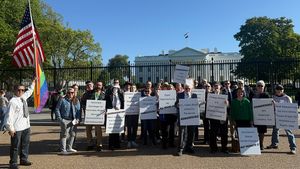The study, “Trauma and Suicide Risk Among LGBTQ Youth,” used data from the Trevor Project’s 2022 National Survey on LGBTQ Youth Mental Health, collected in an online survey conducted between September and December of last year of 33,993 LGBTQ+ youth recruited via targeted ads on social media.
“Individual trauma happens when a physically or emotionally harmful or threatening event, or series of events, is experienced by a person and has lasting effects on their well-being,” the study explains. “Therefore, experiences of discrimination or physical threat or harm based on one’s sexual orientation and/or gender identity may be experienced as individual trauma. Trauma-related symptoms, such as hypervigilance and avoidance, may even be related to perceived covert discrimination and microaggressions.”
“Research has consistently found that LGBTQ youth report increased experiences of trauma-related events compared to their straight, cisgender youth, often because they experience discrimination and victimization based on their sexual orientation and/or gender identity that their peers do not. … Despite this, the relationship between trauma and suicide among LGBTQ youth has been understudied,” the document continues.
Among the study's key findings are that LGBTQ+ youth who reported high levels of trauma symptoms had more than three times greater odds of attempting suicide in the past year compared to those with no, low, or moderate trauma symptoms. One in four respondents with high symptoms of trauma reported a suicide attempt in the past.
Thirty-seven percent of LGBTQ+ people ages 13-24 reported high levels of trauma symptoms, and only 4 percent reported never experiencing trauma symptoms.
LGBTQ+ youth of color were more likely to report high levels of trauma symptoms compared to white LGBTQ+ youth, with the highest rates among Native/Indigenous LGBTQ youth (52 percent) and Middle Eastern/Northern African LGBTQ youth (44 percent).
Significantly more transgender and nonbinary youth reported high levels of trauma symptoms (44 percent) than cisgender LGBQ youth (25 percent).
“Experiences of discrimination, harassment, and violence against LGBTQ youth can contribute to trauma symptoms, which can include feeling scared, anxious, or unsafe in the world, often. These new data demonstrate that LGBTQ youth who reported high levels of trauma symptoms had more than three times greater odds of attempting suicide in the past year,” Myeshia Price, senior research scientist at the Trevor Project, said in a press release.
“We must consider the harm that discriminatory policies — and the ugly rhetoric surrounding them — can have when it comes to the potential for traumatizing LGBTQ youth. We urge lawmakers to implement policies that protect LGBTQ youth from anti-LGBTQ and racist discrimination, as our findings indicate doing so may support effective interventions for reducing trauma symptoms and suicide risk among LGBTQ youth.”
If you are having thoughts of suicide or are concerned that someone you know may be, resources are available to help. Trans Lifeline, designed for transgender or gender-nonconforming people, can be reached at (877) 565-8860. The lifeline also provides resources to help with other crises, such as domestic violence situations. The Trevor Project Lifeline, for LGBTQ+ youth (ages 24 and younger), can be reached at (866) 488-7386. Users can also access chat services at TheTrevorProject.org/Help or text START to 678678. The 988 Suicide & Crisis Lifeline at 988 is for people of all ages and identities.


















































